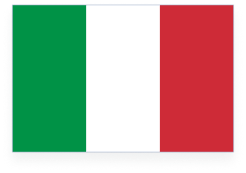Venice is built on over 100 small islands and has no roads, only canals. It is known for its historic architecture and was a major maritime power in the Middle Ages.
Today, Venice is a top destination for teen travel programs. You can explore historic sites or experience how daily life is influenced by the sea. Its canals create a warm atmosphere, and the food—oh boy, don’t get me started on the food.
I can’t get enough of Venice, which is why I continue to lead programs here.
Learn more with some fun facts about Venice!
13 Fun Facts About Venice

- 400 gondolas float through Venice’s canals today, down from 10,000 gondolas at the peak
- Calletta Varisco in Venice is one of the narrowest streets in the world, measuring only 20.87 inches in width
- Marco Polo was Venetian
- The way you say hello in Italian is actually Venetian
- Venetian masks were for having a good time
- Piazza San Marco is the beating heart of Venice
- Venice ruled itself as an independent empire up until 1797 when Napoleon took control
- Venice is an arts haven
- Venice is a city of bridges
- Venice brought coffee to the West
- Venice is depopulating rapidly
- Venice is sinking at a rate of 0.039 to 0.079 inches (1-2 millimeters) per year
1. 400 gondolas float through Venice’s canals today, down from 10,000 gondolas at the peak
Taking a gondola is a great way to see the city.
In the past, wealthy Venetians used gondolas like people in Rome or Paris used horse-drawn carriages. Gondolas were also used to transport goods and for public transportation, but motorboats now handle those tasks.
Today, nearly all of Venice’s 400 gondolas are for tourists. A gondola ride is one of the best ways to see the city.
Gondolas are usually 36.09 feet (11 meters) long and weigh about 1,322.77 pounds (600 kilos). In 2010, Giorgia Boscolo became the first and only female gondolier.
2. Calletta Varisco in Venice is one of the narrowest streets in the world, measuring only 20.87 inches in width
Calletta Varisco in Venice is one of the narrowest streets in the world, measuring only 20.87 inches (53 cm) wide. The word “calletta” means “small street.” Located near Campo San Canciano, this street reflects Venice’s historical layout, where canals were the primary access routes. This lead to the development of narrow paths between houses.
In Venice, houses are numbered by districts rather than by streets, making addresses harder to locate. The best way to find an address is by identifying a nearby monument, shop, or landmark.
Venice is not the only place with narrow streets. Many cities around the world have streets famous for their unusual widths.
| Street | Location | Narrowest Point (Inches) |
|---|---|---|
| Spreuerhofstraße | Reutlingen, Germany | 12.20″ |
| Ulica Klančić | Vrbnik, Croatia | 15.75″ |
| Calletta Varisco | Venice, Italy | 20.87″ |
| Parliament Street | Exeter, United Kingdom | 25.20″ |
| Mårten Trotzigs Gränd | Stockholm, Sweden | 35.00″ |
| Fan Tan Alley | Victoria, Canada | 35.43″ |
| Strada Sforii | Braşov, Romania | 44.00″ |

